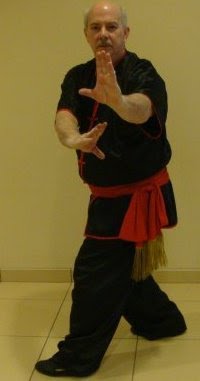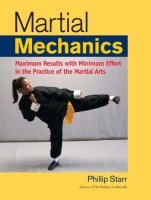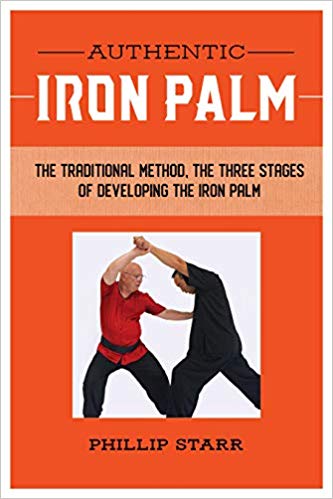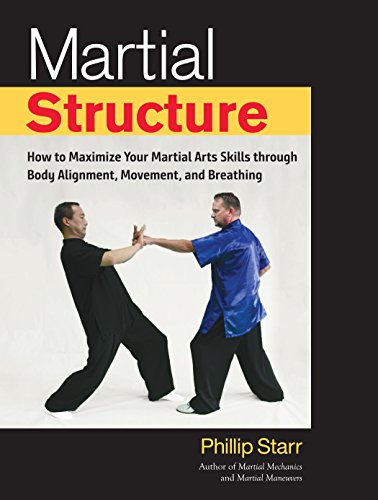by
Phillip Starr
In
a conversation with an old and dear friend (who, like me, is a
long-time martial arts instructor) I asked about several of our
mutual martial arts friends. I inquired about their health,
their families, and whether they were still involved in practicing or
teaching martial arts. I was saddened to learn that quite a
number of them no longer practice the disciplines that they once
embraced; it seems that once they were no longer able to participate
in the sporting aspect of the arts, they’d lost interest in them.
And since I lean towards the philosophical side of life, it got me to
thinking…
Most
martial arts enthusiasts are rather young, not having yet reached
what we call “middle age.” I don’t have the demographics
on this subject but I’d bet that younger children and teens make up
the vast majority of today’s martial arts practitioners. The
next largest chunk would be taken up by those who have not yet
reached their 35th
or 40th
birthdays. And the numbers dwindle dramatically after that…
The
conversation with my friend got me to thinking about the different
paths that martial arts enthusiasts travel. For most, the path
is very short. They practice for a while – some as few as a
week or two and others as long as several months or even years –
and then they fizzle out. For one reason or another, they lose
interest. Oh, they come up with some pretty creative excuses
but what matters is that they gave up. You know, it’s okay if
you lose interest; it’s perfectly alright if you find that there
are other things you’d rather do than throw punches and kicks, and
gasp, and bleed. There’s no need to make up some kind of
bizarre story. Just tell it like it is.
But
the fact is that the vast majority of martial arts devotees just fade
away into the sunset, never to be heard from again. It’s
always been that way, and always will.
For
others, it was fun so long as they could enjoy the art as a sport.
They enjoyed the rush of competition, the give and take of a good
match. But life has a way of putting an end to this aspect of
martial arts. It’s called AGE. And when these folks
could no longer compete due to age or any number of other things
(such as lack of tournaments in their area), they pooped out.
Some
turned to teaching but even then, for many of them it became little
more than a business enterprise. They no longer trained
themselves; the almighty buck became their new sensei or sifu and
their love of the martial arts turned bland and sterile. The
objective no longer had anything to do with self-development;
instead, it became focused around making money. Their art and
their spirits died for the sake of better business.
I
considered all of this and decided that these people had never really
been true martial arts practitioners. They might have once
thought that that was what they wanted but they couldn’t stand the
gaff and they quit.
There
are few things in this world that are worse than false teachers,
especially false martial arts teachers. Certainly, age
robs us of some of our youthful abilities – I can no longer kick as
fast, jump as high, stand as low, or look as pretty as I could when I
was a few decades younger – but what counts is that I keep trying.
If I don’t train on my own, how can I expect my students to train
on their own?
Too
often I hear older martial arts enthusiasts cry about aching backs,
knees, or whatever. Actually, quite a number of them have not
yet reached their 50th
birthdays…and they use excuses like aches and pains as reasons for
not training.
Get
real. Don’t you think that the martial arts masters of
generations past suffered with the same problems? Of course,
they did! The difference is that they absolutely wouldn’t
give up. Period.
And,
unlike so many of our current “older” martial arts practitioners
who train (minimally) just to maintain health and stay in some
semblance of good shape, the practitioners of former generations
continued trying
to improve their skills
even into old age!
Gichin
Funakoshi practiced perfecting his punch while sitting up on his
deathbed just one day before he passed away! Tatsuo Shimabuku
suffered from malnutrition as a child and developed beriberi for a
time. This left one leg slightly shorter and weaker than the
other. Kicking with that leg would have been very painful.
If you watch videos of him doing kata, you can’t tell which leg was
deformed!
Bruce
Lee was born with one leg shorter than the other and he frequently
wore an insert in one shoe. But you can’t tell which leg was
malformed by watching films of him performing his techniques.
These
men and many others like them refused to sit back and whine about
their problems. And they weren’t content to just try to stay
“fit.” They were constantly striving to improve
themselves.
And that’s
what martial arts is all about.
It’s
not about trophies, making lots of money, or just doing enough
exercise to maintain fairly good health. It’s a thing of the
spirit. It’s about a continual striving towards
self-perfection.














